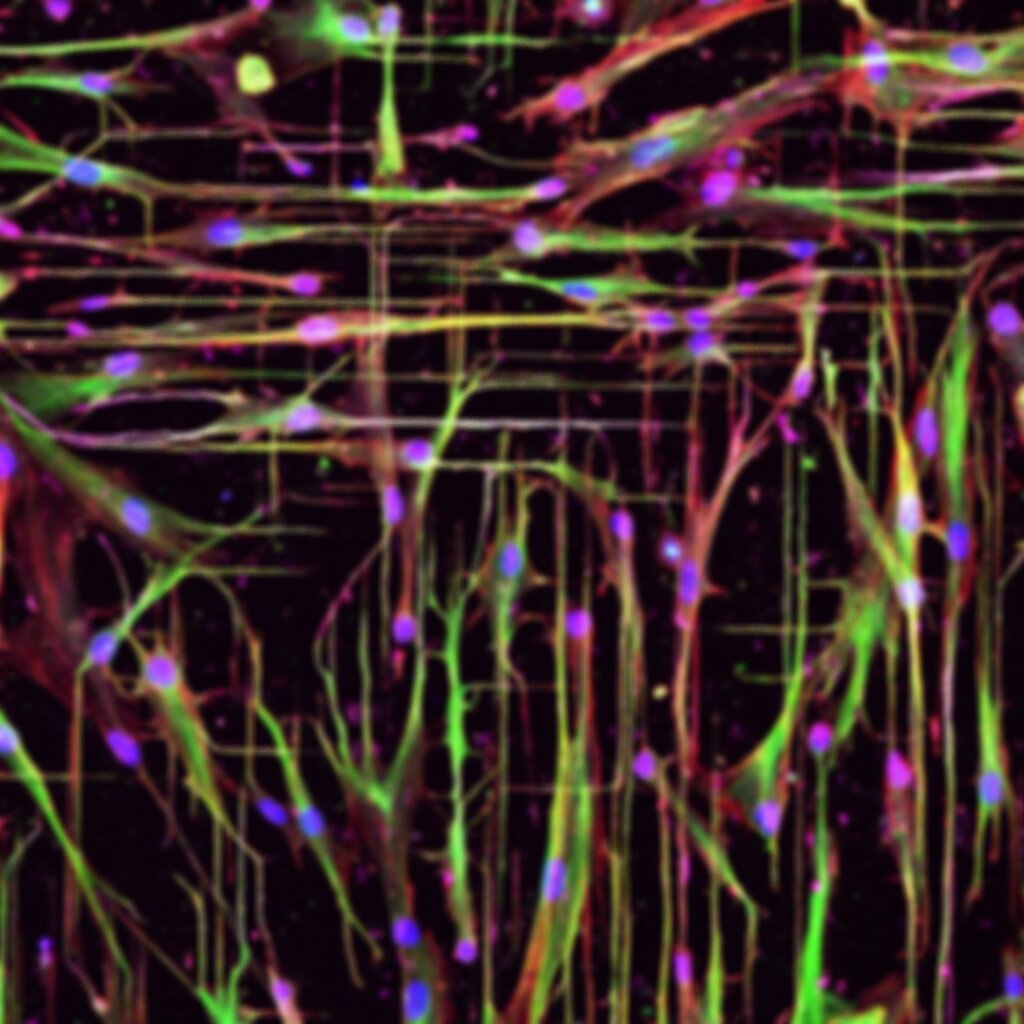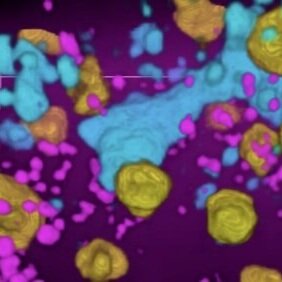Research Overview.
We use innovative bioengineering approaches to pursue our vision of solving key problems in regenerative medicine, biosensing and therapeutics.
Our biomaterials innovations are also applied to soft robotics, and the interface between living and non-living matter, and are underpinned by collaborations with molecular dynamics experts and data scientists in the digital health field.
This work is inherently interdisciplinary, so our group is made up of a diverse cast of materials scientists, engineers, chemists, biologists, physicists and surgeons.
Scroll down to explore more.
Our long-term goal is to democratise and personalise healthcare with ultrasensitive, cost-effective, user-friendly and mobile-connected diagnostic technologies.
To do this, we are transforming disease detection by harnessing the mighty power of miniscule nanomaterials. These nanomaterials react with chemicals produced by diseases in the body and cause visible colour changes in urine tests, and tests similar to home pregnancy kits.
Recognising the ubiquitous power of the mobile-connected modern world, we are co-developing smartphone platforms which capture and record data from the tests to track the spread and treatment of infectious diseases across communities.
Click the image to find out more about advanced diagnostics.
We can influence the behaviour of cells at the interface of living and non-living matter by tweaking the surface chemistry and texture of designer materials.
These materials have emerging applications in medical implants, vaccines, cell supports, and as instructive three-dimensional environments for tissue regeneration. We study the cell-material interface to rationally design materials such as nanoneedles and 3D tissue-engineering scaffolds that cause cells to respond with desirable behaviours.
Our experiments at the interface between biology and materials science frequently push the limits of what existing technologies and methods are capable of. So we decided to invent some of our own.
Click the image to find out more about engineering the cell-material interface.
We have a growing portfolio of cutting-edge biomaterials designed to repair tissues, enhance regeneration and deliver drugs to targeted areas of the body.
We are advancing novel manufacturing strategies, such as 3D-printing, remote stimulation and cell patterning, to build scaffolds for cells that recreate the complexity of real tissues.
As well as this, we are developing new materials for bioelectronic applications and soft robotics.
Click the image to find out more about regenerative medicine and tissue engineering.
Working with collaborators, we are harnessing the computational power of machine learning and artificial intelligence to enhance our understanding of molecules, materials and processes.
Not only can computer simulations verify laboratory observations, but they also prove useful in predicting experimental outcomes, and provide complementary data to experiments.
We work with experts in computer modelling and big data to help screen molecules and systems far faster than is possible by physical experiments, and train computers to help us interpret experimental data.
Click the image to find out more about mathematics and computation.




